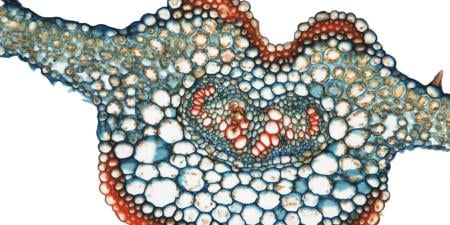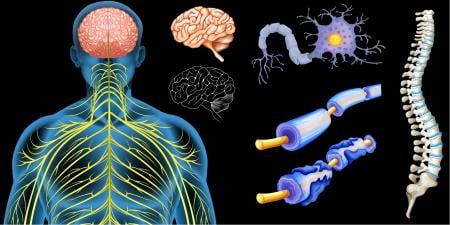An unsettled and unsettling question in the hospital, in the university, and in the medical school is "What qualifies someone to be a bioethicist?" What exactly is it that constitutes expertise for this member of the medical team, this educator, this critic and policymaker?
If you attend the annual meeting of the American Society for Bioethics and Humanities (or ASBH, America's premier bioethics organization), you will find yourself spending a great deal of time looking at name tags. This happens at most conferences, but it has special significance at the ASBH meetings, as much for what follows the names as the names themselves. "Is he a JD?" "Wow, a JD, MD, PhD." "What's the point of a JD, MPH?" Not to mention the RNs, LLMs, MAs, MBAs, or other members of this alphabet soup.
The interdisciplinary nature of bioethics is what makes this question so difficult: what does it mean to be an expert in bioethics? To know what it means to have expertise in bioethics, requires first that we know what bioethicists are expected to do.
The work of bioethics can be classified into 3 broad categories: clinical ethicist, ethics committee member, and policy contributor. In what follows, I take each of these in turn. First, I'll tease out definitions of these categories and their relationship to patients and the health care system. These categories and definitions will not be mutually exclusive nor will they necessarily be exhaustive. There are certainly individuals who do all 3. Instead, these categories define the basic types of labor bioethicists do. Second, I'll suggest whether or not each kind of labor can be credentialed. Can we formally test individuals to see if they are experts in this area? This will be somewhat speculative, given the need for infrastructure and capital to set up a system of credentialing. I will only try to determine if we can reasonably identify what any such testing would be about.
Clinical Ethicist
First, the work of a bioethicist in the hospital is often in the role of clinical ethicist. This is the individual or team called in to consult with a patient, family, and other health care team members to help clarify or resolve an impasse. In many ways, the clinical ethicist, when called, becomes part of the health care team.
The expertise of clinical ethicists has been variously described as: "knowing how to lift up and ask the relevant questions…in a face-to-face conversation" [1], "to provide consultation and advice on the ethical aspects of patient care…[and] to interpret the meaning and implications of the patient's values for medical decision-making and to assist surrogate decision makers to accommodate those values" [2], and providing "support and advice to health professionals and patients on ethical issues arising from clinical practice and patient care" [3].
Fundamentally, each of these definitions requires the clinical ethicist to have the ability both to communicate effectively and to determine the most pressing ethical aspects of a clinical case. Both abilities can be learned and evaluated.
Credentialing clinical ethicists, though difficult, should be pursued. As members of the health care system, clinical ethicists can have a direct impact on patient care through the identification and satisfaction of patient interests and desires. Accordingly, there is a pressing obligation to ensure that only qualified individuals hold these positions. Credentialing will be difficult because the ability to communicate ideas across audiences (medical professionals and patients) may not be easily measurable. Nonetheless, organizations like ASBH should be taking on the responsibility of articulating standards for evaluating the abilities of the clinical ethicist.
Ethics Committee Members
Second, often clinical ethicists are members of the medical center's or hospital's ethics committee along with other individuals. Some have suggested that clinical ethics consultations should be carried out only by ethics committees and not by individual ethicists [1]. Despite this recommendation, consultations usually involve only 1 or 2 of a set of select members of the ethics committee.
McGee et al produced a descriptive study of hospital ethics committees (HECs) in 2001 [4]. They surveyed 356 HECs nationwide and found that physicians and nurses tended to dominate (in numbers) HECs, but that committees "exhibited substantial variability in composition" [4]. Clergy, social workers, attorneys, and risk managers are often the members of HECs. They also found that HECs fill different roles in different institutions—some actually produced binding decisions. I am primarily addressing the roles that McGee et al found most ethics committees take on: case consultation, self-education, and formulating and evaluating policy [4]. I will return to education near the end of this essay, and I have addressed case consultations above. This leaves hospital policy formation and critique.
Individual ethics committee members do not need credentialing to be competent policy advisors. Of course, if they take part in an ongoing case consultation, they would be filling the role of clinical ethicist and would need the requisite competence. However, when a community member or physician takes part in the conversation of an ethics committee, I would expect him or her to have a basic understanding of the issues of bioethics. If they look dumbstruck when I use the word "autonomy," that would be a sign of trouble. But their primary responsibility in the post hoc analysis of cases and recommendations about policies (both present and future) is to represent the interest of their group. A good HEC will have members that represent the various stakeholders in policy decisions, but this will only place minimal requirements on the particular expertise of individual members.
Though it is a far cry from credentialing, minimal educational requirements for ethics committee members seems a reasonable restriction. It should be fairly easy to use 1 or more of the bioethics tutorials compiled by the NIH to meet these minimum requirements [5].
Policy Contributor
Third, large groups of individuals take on the role of policy contributor. These are individuals who work at various kinds and levels of policy work. This could include the individuals who publish original research in bioethics and those who serve on the President's Council on Bioethics, the AMA's Council on Ethical and Judicial Affairs, and similar bodies. Ruth Faden has referred to a similar category of bioethicists as scholars and researchers [6]. Insofar as we include the individual making hard and fast recommendations about the ethical aspects of legislation and institutional policies, we are speaking about the same kind of individual.
Policy contributors are the only kind of bioethicists who could theoretically never set foot in a hospital as a professional. For example, a meta-analysis of several studies on the limits of informed consent may lead to a policy recommendation, but it would not require a single clinical encounter (for the individual doing the meta-analysis).
As the most diverse group of bioethicists, policy contributors will consistently resist credentialing through the sheer diversity of possible contributions. Fields of input could include law, moral theory, clinical case experience, clinical and basic science research, theology, theoretical and empirical psychology, and cultural studies. The classes of individuals who could contribute include philosophers, physicians, nurses, social workers, theologians, sociologists, psychologists, attorneys, and others. Structured credentialing may not be necessary or desirable. A certain degree of credentialing is already in place—journal and book publications are subject to debate and peer review. Moreover, good policy ideas can arise from surprising sources.
Education
Some may argue for a fourth category: bioethicist-as-educator. This category, however, does not stand apart. Individuals in each of the 3 categories above can and should serve as educators both about expertise-specific strategies and information to colleagues and novices and about general issues in bioethics to the public. Credentialing educators in each area of expertise mentioned above should follow the credentialing of that area.
References
- Rubin SB, Zoloth L. Clinical ethics and the road less taken: mapping the future by tracking the past. J Law Med Ethics. 2004;32(2):218-225.
- Agich GJ. Joining the team: ethics consultation at the Cleveland Clinic. HEC Forum. 2003;15(4):310-322.
- Slowther A, Johnston C, Goodall J, Hope T. Development of clinical ethics committees. BMJ. 2004;328(7445):950-952.
- McGee G, Spanogle JP, Caplan AL, Asch DA. A national study of ethics committees. AJOB. 2001;1(4):60-64.
-
National Institutes of Health. Tutorials. Bioethics Resources on the Web. Available at: http://www.nih.gov/sigs/bioethics/casestudies.html. Accessed January 24, 2006.
- Faden RR. Bioethics: A field in transition. J Law Med Ethics. 2004;32(2):276-278.



